THE OUTLIERS
The Outliers is structured around a series of case studies, cultures and time periods that are all related to same theories and thesis. According to Malcolm, success has nothing to do with high intelligence, level of genius or innate ability. Instead, success is based on prior investment of hard work, creativity, time, support and opportunity. Gladwell says it is that simple. Your culture, legacy and environment also play a part. He backed his point using various case studies of triumph and success. When an opportunity presents itself, you must be prepared and ready to maximize on it. That is not the point where you begin your preparation. Your prior preparation will determine if you will seize the opportunity or lose it. There is no shortcut to mastery. You must put in the work.
Below is a quick summary of the six key points Malcolm Gladwell takes us through:
Opportunity: Success rarely comes to those who struggle to break from the norm. There must be at least a glimmer of talent in you to achieve success. Opportunity gives you the chance to access coaches and tools that you need to build your skills. Those tools prepare you for a more robust opportunity. Gladwell considers remarkable individuals in this section such as Bill Joy, Robert Oppenheimer, Bill Gates and an unsung intellectual Chris Langan.
Timing: Timing is crucial and critical to success and opportunity. When and where you are born can influence your opportunity. 14 of the 75 richest people in history were born between 1860’s and 1870’s when the industrial revolution was taking off. Also in 1935, there were fewer babies born, roughly 600,000, which means a smaller class size. During this period, there were greater chances of getting into college, good sports team or even getting a good job in better firms.
Upbringing: The quality of the upbringing a child receives also influences his/her success. Parents that are more involved in their kids’ lives provide them with opportunities that lead to the child’s success. This can include enrolling them in summer school, taking them to museums and assisting with their homework. Kids that do not have parental care or affection tend to lose more opportunity.
10,000 hours: It typically takes 10,000 hours to become a master of something. You must invest that amount of your time.
Meaningful Work: You must invest hard and meaningful work to get the best out of it. Meaningful work makes you want to put in more hours. For instance, immigrants value and practice hard work. Sociologist Louise Farkas confirmed this while studying the immigrants family tree. He found out that the offspring became professionals and successful. She concluded that in spite of their humble background, they have been trained to value and practice hard work.
Legacy: Value drives legacy. Our values are passed down to us from generation to generation which directly affects our current behavior. Dutch psychologist, Geer Hofstede, did an analysis on different country’s cultural tendencies. He identified different dimensions such individualism, collectivism, uncertainty, avoidance and power distance index. Gladwell believes the society of one’s ancestors has a tendency of determining one’s practice and preference, even in the present day.
The Big Three – Key Points:
Key Point #1 Success has nothing to do with level of genius or IQ. It has more to do with hard work, culture, society, and opportunity.
Key Point #2 Success comes to those who are ready to become a master in what they do.
Key Point #3 To be successful you must be ready to seize opportunities.
One Last Thing
“Practice isn’t the thing you do once you’re good. It’s the thing you do that makes you good.”
― Malcolm Gladwell, Outliers: The Story of Success
